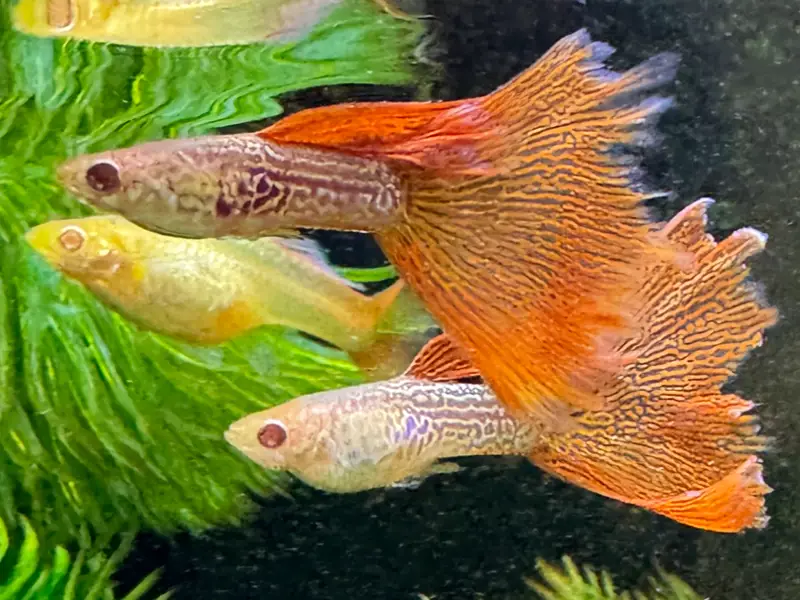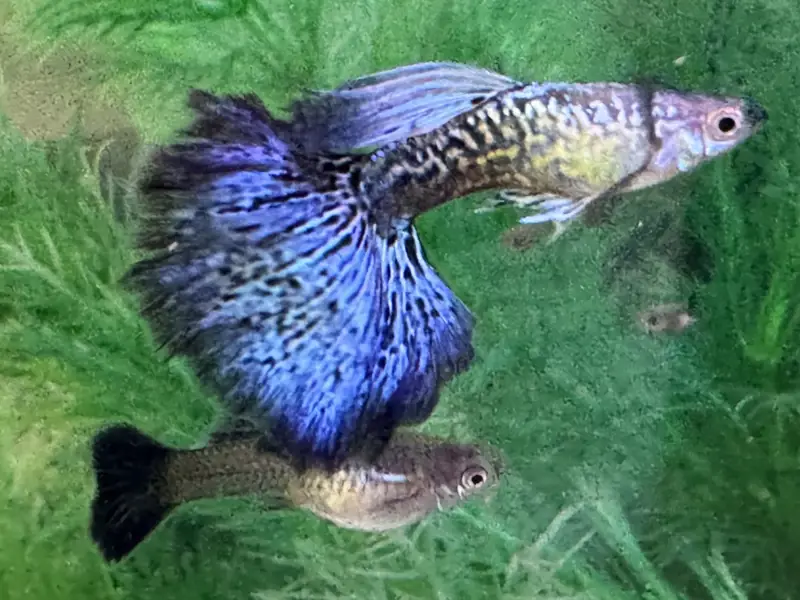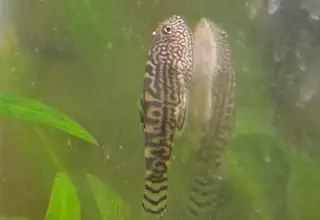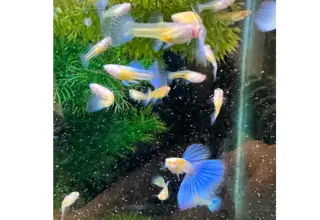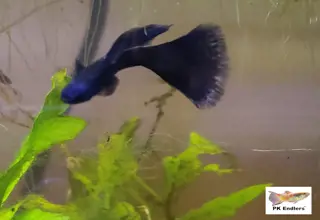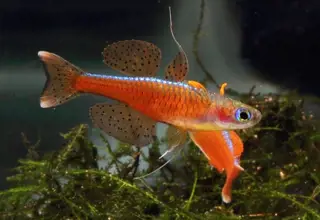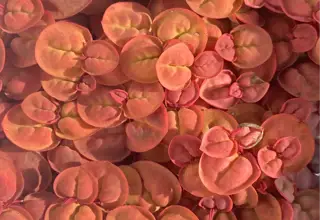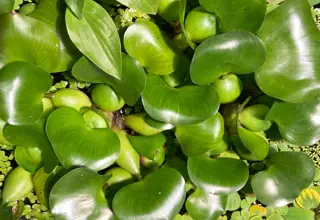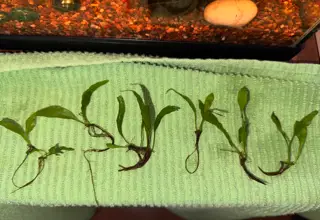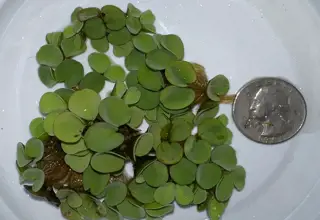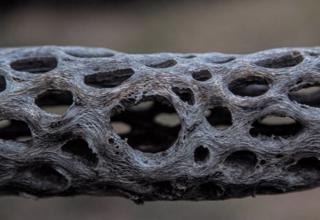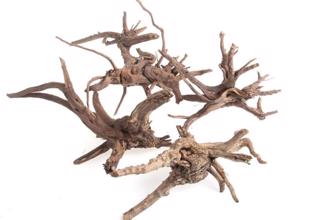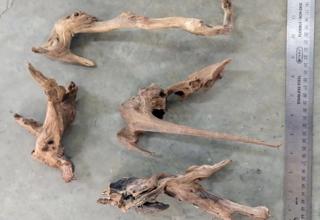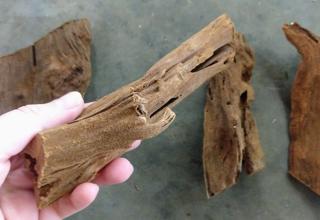Snow White Cichlid: Appearance, Care, Lifespan, Breeding & More
Posted by Miles Harrison on 11/15/2022
We use affiliate links and may receive a small commission on purchases.
Snow White Cichlids (Pseudotropheus socolofi) are rare albino fish highly sought after by African cichlid enthusiasts. These uncommon cichlids have entirely white bodies with striking red eyes.
If you’re new to African cichlid keeping, you’ll be happy to know that these fish are some of the easiest to care for, and are even considered to be much hardier than their Mbuna counterparts.
Still, there are some things you should be aware of before owning this unique species. In this guide, we’re going to cover all the essentials. We’ll discuss their overall care, lifespan, and appearance. We’ll even discuss best practices for breeding this fish in captivity.
January's Giveaways on Light Fish
Species Summary
The Snow White Cichlid (Pseudotropheus socolofi), occasionally referred to as the Albino Pindina, is a naturally-occurring albino variant of the more common Powder Blue Cichlid. This uncommon Mbuna cichlid is endemic to Africa’s Lake Malawi, but has become more widespread in the aquarium hobby due to selective breeding.
The best part about owning a Snow White Cichlid is that they are relatively easy to care for. Advanced hobbyists and beginners will enjoy observing this species, as it tends to gravitate towards the middle of the water column.
Snow White Cichlids are unique in that they are considered to be albinos. If you’ve never owned an albino fish before, the snow white cichlid is a great first choice, as its relatively easy to care for.
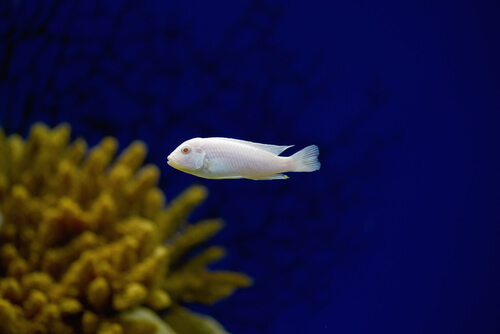
Appearance
Snow White Cichlids look similar to little submarines, they are slender fish with bodies that taper towards their tail fins.
Snow White Cichlids have a unique appearance, they’re known for their all-white bodies and red eyes, making them true albino fish.
Take one glance at a snow white cichlid, and It’s quite obvious that this is not your average fish. These pattern-less fish have bodies, fins, and mouths that are all completely white in color. Their pectoral, dorsal, caudal, and anal fins all feature a translucent white coloration. Their unique coloration is the result of cells that are unable to produce melanin, the substance responsible for determining color.
The only exception to this fish's white coloration is its red eyes. The eyes of a snow white cichlid are red due to the red blood cells that exist in the fish’s retina. Traditional fish have pigment that obscures the red coloration, but that’s not the case with a snow white cichlid.
Males can be differentiated from females, by the distinct egg-spots on their anal fins. They will also have pelvic fins that are slightly larger than their female counterparts.
Size
Adult Snow White Cichlids will grow to be about 6 inches in length. In the wild, these fish will reach a similar size, juveniles will be a bit smaller, and are not considered fully grown until they’re at least 1.5 years old.
Male snow white cichlids will be slightly larger than females, and females will have slightly shorter fins with rounded edges.
🛒 Shop Freshwater Fish on Light Fish
Snow White Cichlid Care
Caring for a snow white cichlid is similar to caring for other Mbuna African cichlids, and overall, they’re not very difficult to care for. After a small 1-2 week transition period, these fish can adapt and live healthy lives in captivity.
That being said, you’ll still want to give your snow white cichlid the best possible care, and there are a few things you should know before purchasing this fish.
In the wild, these fish live near rocks in Africa’s Lake Malawi, under warm, hard water conditions. You’re going to want to re-create these conditions as best as possible in a home aquarium. If recreating these conditions sounds daunting, don’t fret, because we’re going to explain exactly how to do it!
Tank Size
Snow White Cichlids require at least a 50-gallon aquarium.
Snow White Cichlids are much larger than nano schooling fish, and as such, require a much larger aquarium. If you plan on keeping multiple African cichlids, or plan on adding additional tank mates, you’ll want to go even bigger, many hobbyists will house cichlid groups in aquariums over 100 gallons in size.
Lifespan
Given proper care, the snow white cichlid can live for up to 7 years. In some cases, aquarists have documented their fish living for up to 9 years! You’ll want to plan accordingly, as these fish are long-lived.
Some of the biggest factors that affect lifespan are quality of care and nutrition. You’ll want to provide pristine water conditions to give your fish the best chance at living a long and healthy life. Combined with a well-balanced diet, you’ll be setting yourself up for success with this species.
It’s not uncommon to see a snow white cichlid sold as a juvenile. Always inquire about the age of the fish at the time of purchase, so that you’ll have a good understanding of the fish’s life expectancy.
Water Conditions
Given the proper environment, these fish can adapt quite well to a home aquarium. You’ll want to carefully re-create the snow white’s natural environment. Luckily, these fish have been well established in the hobby, so there’s a solid foundation on how to correctly care for this species.
These fish are a rock-dwelling species, which if you haven’t guessed, means they can be found in the small caverns and caves created by natural rock formations. These waters are much more alkaline compared to more acidic waters seen in places like the Amazon.
You’ll want to maintain the following water conditions for a snow white cichlid:
Temperature Range: 78°F-80°F
pH Range: 7.5-8.5
GH: 10-15 DGH
Temperatures in their native habitat are quite warm, and you’ll want to mimic these temperatures as closely as possible. These fish won’t do well in cold water conditions, so purchasing a reliable aquarium heater is a must.
Always test your water conditions to make sure ammonia and nitrite levels are at 0ppm. Any higher, and your snow white cichlids can become more vulnerable to potential diseases and parasites.
Tank Setup
Possibilities are endless when it comes to aquascaping your snow white cichlid aquarium, but there are certain things you’ll definitely want to avoid. Many aquarists warn against keeping plants in a cichlid aquarium, and it’s for good reason. These fish love to pick at plants, so stem plants like Hygrophila Salicifolia or Nymphoides Hydrophylla are out of the question.
However, smaller plants, such as Anubias Nana or Anubias Frazeri can successfully be kept with cichlids once anchored. The biggest inconvenience you’ll face with these plants is the time it takes for the roots to take hold. But once they’ve adjusted, they can coexist with African cichlids, including the snow white.
Sand substrates are best when keeping African cichlids, and crushed coral and crushed oyster shells can be added to maintain proper pH levels.
Aquarium driftwood, such as Mopani or Cholla look excellent in a cichlid tank, just be aware that once introduced, they can release tannins, turning your aquarium water brown. Don’t worry though, after a few weeks and a few 20% water changes, your aquarium water will clear right up.
Rocks and stones can be positioned to create small caves and caverns, which will be much appreciated by the rock-dwelling snow white cichlid. We recommend Seiryu or natural slate stones, as we find them to be very visually appealing, but realistically any type of stone will work. Just be sure not to overcrowd your tank, these fish love to have open spaces to swim.
Common Diseases
Although the snow white cichlid is considered to be a hardy fish species, they are still susceptible to many diseases that plague most cichlid fish. One of the most common diseases is known as hole in the head.
This parasitic disease mostly affects cichlids, discus fish, and oscar fish, and is usually diagnosed by the appearance of small, pitted lesions on the head of the fish. Over time, these holes will grow larger, and more than likely your fish will succumb to additional bacterial and fungal infections.
Always inspect any new fish you plan on adding for disease. If you’ve had your snow white cichlid for quite some time, then poor water quality may be the contributing factor to this disease. Poor water quality stresses fish, ultimately weakening their immune systems. Continuously monitoring water chemistry for toxicity is the best prevention for hole in the head disease.
Treatment for hole in the head typically involves daily 30% water changes for 3 days, and dosing metronidazole, an antibiotic. After treatment, you should start to see signs that your fish is recovering from this disease.
Another common disease that affects snow white cichlids, is called Malawi Bloat. Typically, it’s easy to diagnose, as you’ll notice swelling near your fish’s abdomen. Loss of appetite and rapid breath are other symptoms, and your fish will most likely appear lethargic. You may also notice your fish staying near the substrate to conserve energy.
🛒 Shop Aquarium Plants Fish on Light Fish
It’s believed that Malawi bloat is caused by poor water quality, or diet-related problems, including overfeeding. Treatment also involves the antibiotic metronidazole. Small amounts of Epsom salt can also be added gradually to the aquarium. Adding 1 tablespoon for every 5 gallons of water can help your fish get rid of this parasite. Aquarists have also fed their fish small peas, to help improve their fish’s digestive tract.
Ultimately, the best treatment is prevention, always provide your fish with optimal water quality and a well-balanced diet. This will ensure their immune system is in top shape to fight off any potential disease.

Food & Diet
Snow white cichlids should be fed a well-balanced diet that consistents of nutrient-rich flake and pellet food, such as new life spectrum and extreme aquatic pellets. Spirulina can also be fed.
Feed your snow white cichlid’s at least 1-2 times a day, and feed them no more than what they can consume in a 2-3 minute period. Overfeeding is a common cause of poor water quality in a freshwater aquarium.
In the wild, these fish are omnivores and will feed off algae that live on rock surfaces. You can skip meaty foods if you plan on keeping a snow white cichlid.
Behavior and Temperament
Snow white cichlids aren’t nearly as aggressive as other Mbuna cichlids, but they’re not the most peaceful fish either. These fish are territorial, so you’ll want to have plenty of available space in the tank for them to mark as their home turf.
These fish are quite fun to observe. They’re relatively active, but they love to stay close to their hideouts, and they’ll retreat to available caves and rocks if they get spooked or feel threatened. You’ll typically see these fish swimming along the substrate, and towards the middle of the aquarium.
Tank Mates
The best tank mates for a snow white cichlid are other snow white cichlids. You can also keep snow white cichlids with other types of African cichlids, such as the Yellow Lab or Demasoni cichlid. The territorial personalities of African cichlids are why many hobbyists keep African cichlid-only tanks.
Since these fish have territorial personalities, you’ll want to stay clear of peaceful schooling fish, such as purple moscow guppies. Larger fish such as platinum parrot fish and electric blue jack dempsey fish should also be avoided.
You’ll also want to avoid any smaller invertebrates, such as black mystery snails or orange pumpkin shrimp. These inverts will get harassed by your snow white cichlids, so avoid invertebrates altogether.
You can keep males with females, but you’ll want to aim for one male for every 3 females. This will lessen the chances that you’ll run into any potential territory disputes amongst the males.
Breeding
Snow White Cichlids reach sexual maturity at around 8 months of age. If you have a male and female pair of snow white cichlids, you have a legitimate shot at getting these fish to breed.
You’ll want to set up an established aquarium for your fry to develop in. Beneficial bacteria should be well established, and water quality should be immaculate in this aquarium.
You’ll know your male is ready to breed if you notice that he begins digging a nest in the sand substrate. You’ll notice the male carefully guard this nest, it’s quite entertaining to observe! Only females will be allowed to come near the nest. If you’re fortunate enough, a female will lay eggs on the nest and can lay up to 40 eggs at one time.
These fish are mouth-brooders, meaning they’ll collect the eggs in their mouths, which will eventually be fertilized by the male snow white cichlid. The fertilized eggs will continue to be held by the female for up to 3 weeks.
You’ll want to transfer your fish to the established fry tank. Once the fry has hatched, you can move the adults back into your main display tank. You’ll need to feed the fry small amounts of baby brine shrimp, daphnia, and microworms, and you’ll need to perform frequent water changes to ensure immaculate water quality.
If you can keep the fry alive through this difficult period, which is typically around 4-5 months, you’ll have successfully bred snow white cichlids!
In Conclusion
Snow white cichlids are some of our favorite Mbuna cichlids. Their ease of care, unique appearance, and entertaining personalities make them some of the best Mbunas around! If you’re fortunate enough to come across one, you now have all of the knowledge needed to decide whether or not this fish is the right species for you.
We hope you enjoyed reading about this wonderful fish. We love to hear from our readers, so be sure to check out our community forum where we collect feedback on our posts and discuss everything related to fishkeeping.
January's Giveaways on Light Fish
